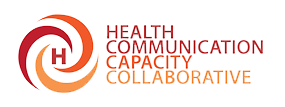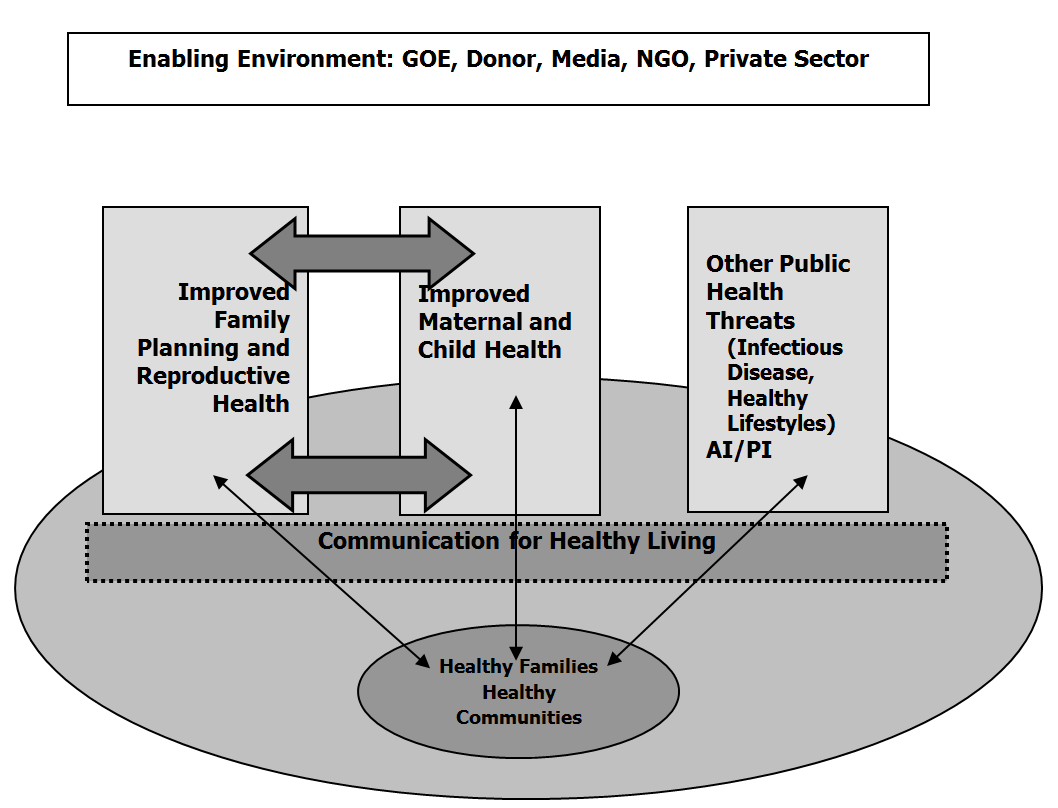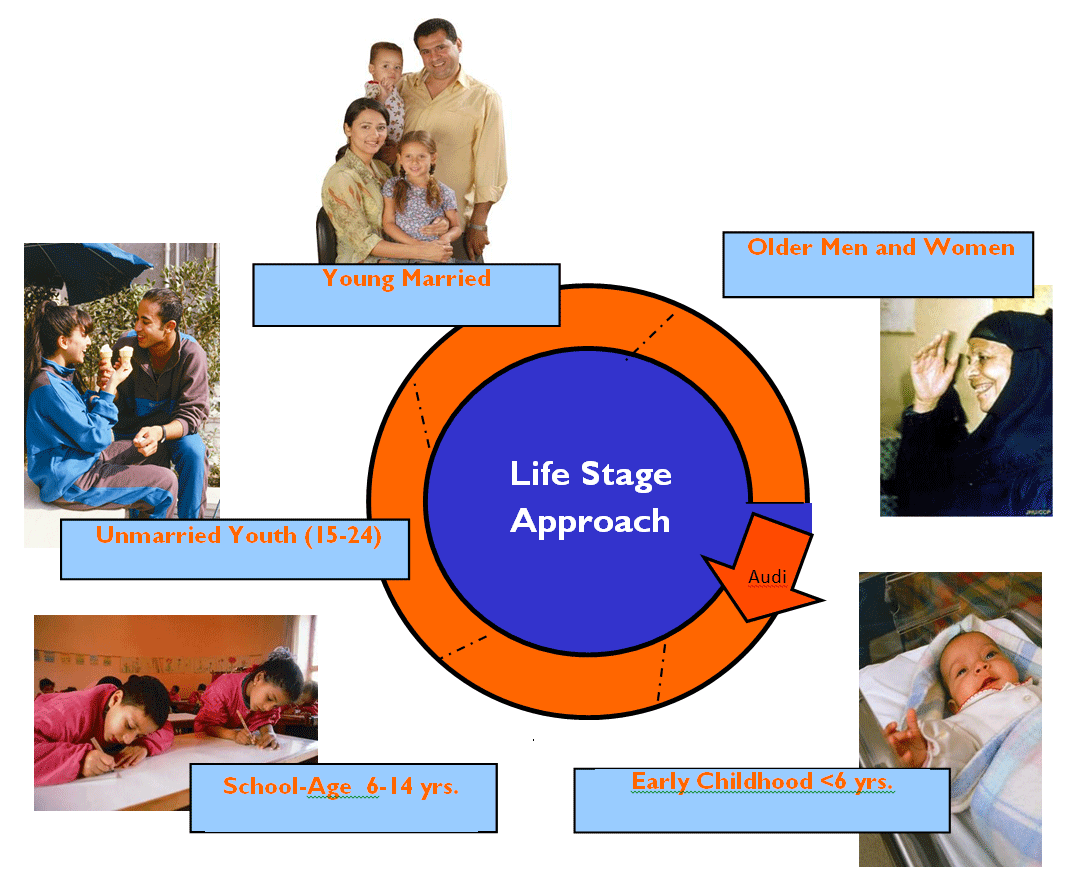Example: Creating a Strategic Framework
Support to Service Delivery Integration (2011 – 2016)
In Malawi, the communication component of Support to Service Delivery Integration (SSDI) uses a theory based life-cycle approach to increase individual demand for and create community commitment to improved health at the national and community levels. The SSDI-Communication strategic framework illustrates how the strategic objectives and the related project interventions work in synergy to enhance the health of Malawian families through a systems approach.
The centerpiece of the framework is the “Together We Build Healthy Families” platform, around which the communication strategy, interventions, and materials are built. The focus on “healthy families” enables Malawians to envision a world where there is not only an absence of illness, but where they are living “well” and enjoying an improved quality of life. The platform provides a means to promote this vision while at the same time emphasizing different aspects of “health” under one common campaign in staged phases.
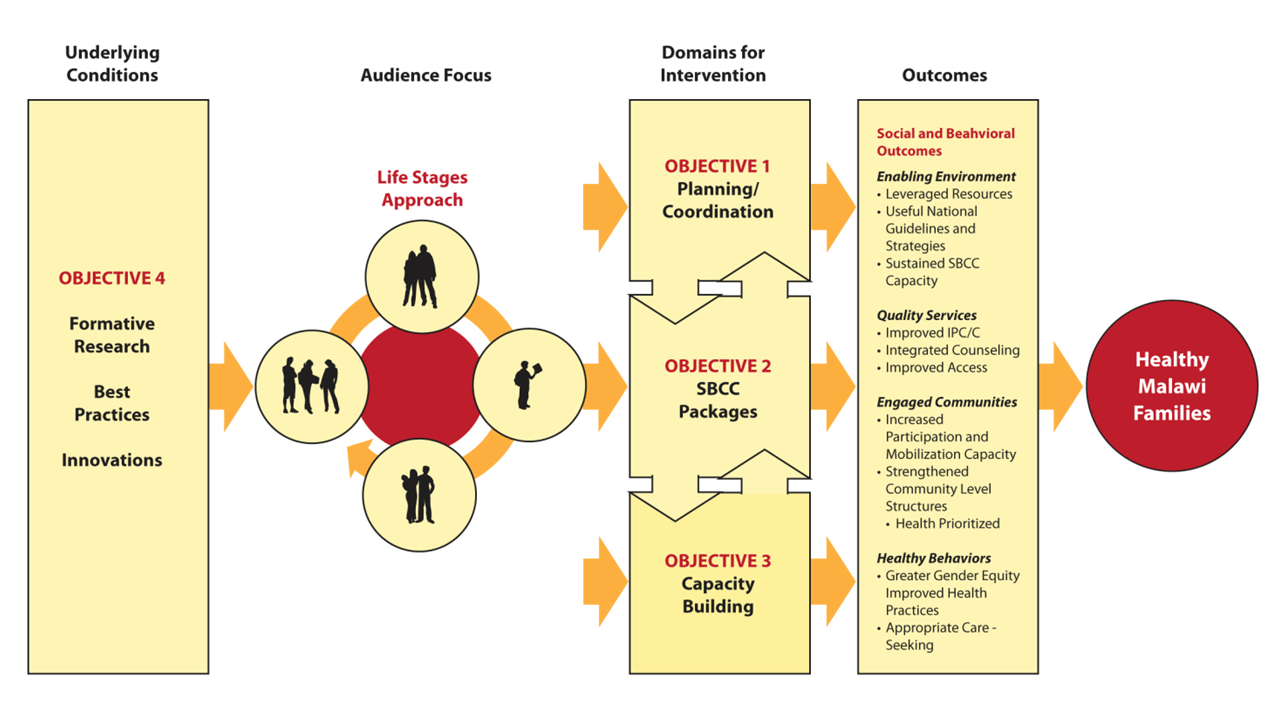 Because the LifeStage perspective takes into account that people’s own definitions of health and well-being change according to their particular stage in life – i.e. adolescents/young adults; young marrieds; parents of young children; parents of older children – the platform can respond to those life stages and package health differently to different audiences. This approach also provides exciting opportunities to reach people at pivotal events in their lives, such as birth, graduation, marriage, and first employment, among others. These serve as teachable moments when people become open to adopting new behaviors or changing harmful practices.
Because the LifeStage perspective takes into account that people’s own definitions of health and well-being change according to their particular stage in life – i.e. adolescents/young adults; young marrieds; parents of young children; parents of older children – the platform can respond to those life stages and package health differently to different audiences. This approach also provides exciting opportunities to reach people at pivotal events in their lives, such as birth, graduation, marriage, and first employment, among others. These serve as teachable moments when people become open to adopting new behaviors or changing harmful practices.
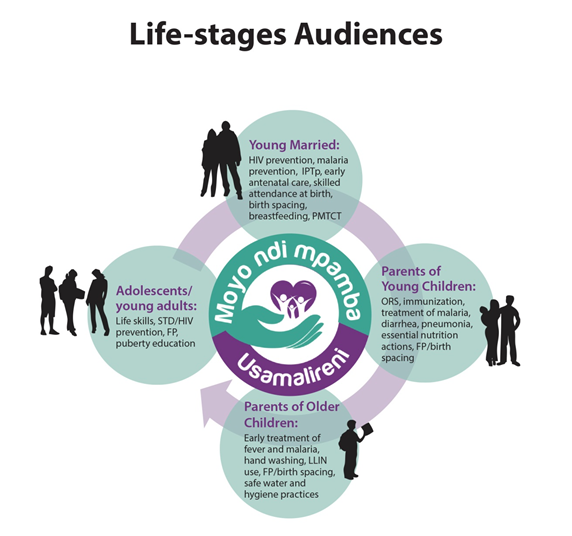 Behavior is influenced through multiple levels, from the individual to broader societal forces and notions of health, and well-being cannot be conceptualized as only an individual-level phenomena. Therefore, interventions must incorporate a multilevel approach in order to bring about sustainable change. As shown in the strategic framework, the domains for intervention include improved planning/coordination, SBCCC packages, and capacity building, with interventions implemented at the national and community levels in order to ensure consistency and harmony of interventions and to build sustainable capacity at all levels.
Behavior is influenced through multiple levels, from the individual to broader societal forces and notions of health, and well-being cannot be conceptualized as only an individual-level phenomena. Therefore, interventions must incorporate a multilevel approach in order to bring about sustainable change. As shown in the strategic framework, the domains for intervention include improved planning/coordination, SBCCC packages, and capacity building, with interventions implemented at the national and community levels in order to ensure consistency and harmony of interventions and to build sustainable capacity at all levels.
In order to best understand how to position the healthy families and craft a quality communication strategy, SSDI-Communication used innovative formative research techniques to explore barriers to behavior change at the structural, service delivery, societal, and personal levels and to address these barriers through effective interventions at all levels. SSDI-Communication uses innovative formative research techniques to explore the barriers and facilitators to behavior change. Using best practices and tested innovations, SSDI-Communication works with its partners to create a unifying creative platform that energizes all partners, facilitates effective coordination, harmonizes an integrated SBCC package, and strengthens capacity building.
By applying the integrated Strategic Framework and life stages platform and by working together with the other SSDI sectors, the expected outcome, fostered by sustained social and behavior change, is the improved health of Malawian families.
CHL Strategic Framework – A Cross-Cutting Approach for Egyptian Families
The purpose of the CHL program was to improve health outcomes across multiple health areas, including family planning and reproductive health, maternal and child health, infectious disease and non-communicable disease, as well as healthy lifestyles. The strategy that was designed to meet this goal placed the household and community at the center of the program.
Recognizing that health information converges at the household level, CHL sought to deliver a unified package of health messages anchored in the idea of the “Healthy Family.” The strategic framework below illustrates CHL’s cross-cutting approach in communicating the messages of multiple health service areas to the public, to achieve “Healthy Families, Healthy Communities.”
The framework shows both the top-down and bottom-up dimensions of the health program. From the top down, national health priorities and the vertical service delivery programs sought to “steer” messages toward the household, with the recognition that the specific behaviors being promoted represent signs of a “healthy family.”
At the same time, the strategic framework recognizes that the household is the main actor in demanding health information and services, driving the program from the bottom-up. CHL therefore placed control in the hands of families and communities through greater use of civil society organizations, community-based programs, and support to people’s health-seeking efforts to “pull” services through local health and information providers.
CHL found that employing a cross-cutting approach resulted in:
- a high-level of support for health communication among health leaders, improving the enabling environment;
- the development of a critical mass of health communication capacity among practitioners across health sectors;
- increased program coordination across health departments;
- the repositioning of health, in general, as a positive value that can be achieved or protected by people through many specific actions;
- rapid program response to emerging health threats;
- economies of scale in the production and distribution of communication materials; and
- a widened ownership of health communication among public, private and NGO sector partners throughout the system, improving sustainability.
The Life Stage Approach
CHL operationalized the family focus of the program through a Life Stage approach. The Life Stage approach segments the family according to the age- or stage-appropriate needs of each member, addressing the household as a key decision-making unit. At the same time, this approach addresses the needs of entire age cohorts in society (for example, “Children under 6 years,” “Unmarried Youth,” or the “Young Family” cohort) allowing for message campaigns relevant to the population as a whole.
While each Life Stage has specific behavioral objectives, the CHL strategic framework acknowledges that every stage is transitional and operates within the context of the family and community as a whole. Good health behavior adopted at an early stage, or collectively, represents a positive health investment and will have a cumulative, sustainable impact on future health behavior.
The Life Stage approach aims to enhance the continued practice of healthy behaviors within the family and, by extension, to improve the health status of the wider community. Major Life Stage segments are subdivided as follows, to address specific issues, with avian influenza and other priority infectious diseases a special focus for all age groups:
- Young Children (0-5, neonates and infants)
- School Age Children (6-14)
- Youth (unmarried, aged 15-24)
- Young Marrieds (spacers, 0-2 children)
- Older Men and Women (limiters, school age children)
For the long-term impact on the health status of Egypt, the program placed a special emphasis on Youth, Young Marrieds, and Young Children. Also, communities with special health needs such as underserved rural communities or other geographically or socially defined groups with acute health needs received focused program attention.
By focusing efforts on the household and community levels, and through the use of a life-stage approach, CHL was able to address a number of health areas in an integrated fashion. This approach enabled CHL to reach specific audiences with information and skills when it would be most useful to that particular audience. Thus, CHL was able to maximize its inputs as intervening in one life stage yielded long-lasting results across a lifetime.
Back to Step 4With funding from USAID and through its affiliation with the global Health Communication Partnership, Communication for Healthy Living (CHL) (2003-2011) provided communication support for health lifestyles and behavior change on a broad spectrum of health outcomes and aimed to build capacity for health communication among the public, nongovernmental organizations and private sectors in Egypt.

